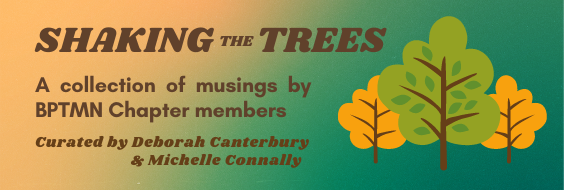Jean Suplick, 2018 and 2020-2021 New Class Director
Have you ever stepped outside on a fine morning, closed your eyes for a few moments, and taken in the soundscape? No doubt you will hear some human-generated sounds like tires on pavement, jets droning by overhead or maybe playing children. But wait. Hold on. Was that a bird you just heard?

Wouldn’t it be great to bring up an app on your smartphone and have it tell you in real time that what you’re hearing is a Northern Cardinal? And to tell you over and over, every time that Cardinal sings? With repetitive association like this, your brain would begin to associate the species with the vocalization, even if you can’t see the bird.
There is an app for that, and it’s called Merlin. Its newest feature, called Sound ID, leverages the power of smartphones as field devices along with AI technology which analyzes audio in real time and matches it to the most likely bird species. If you haven’t already download Merlin, now is a good time to give it a try. More than just a field guide to birds, it’s designed to be used in the field by anyone, even children.
On a recent birding trip to the Minnesota Northwoods, I delved into learning Merlin’s Sound ID feature with determination. As someone who birds in Texas as much by ear as by eye, I was hoping it could help me make sense of the morning’s unfamiliar cacophony that’s the rich avian soundscape of spring in the north. The results were more than I hoped for. Having Merlin on my smartphone was like having three extra pair of ears and an impartial brain that didn’t selectively focus on one sound to the exclusion of others.
While it’s often difficult to see warblers in the treetops, you can hear them when they vocalize. I turned on Merlin’s Sound ID feature and moment by moment it indicated which birds it was detecting, amazingly even when the songs overlapped or were spatially spread out around and above me. It kept a list and highlighted each species in yellow each time it was detected. If you can, it’s always a good idea
to verify that Merlin’s recommended species is your singing bird by actually seeing it with your own eyes. Over the course of three days, I was able to learn the typical songs of three birds whose vocalizations I was unfamiliar with: American Redstart, Chestnut-sided Warbler, and Alder Flycatcher. Real time association along with repetition was the key.
When I stopped recording, Merlin saved the audio along with the list of detected birds, the accompanying sonogram, GPS coordinates, and time/date info, so I could review the results in the app later. It also kept the correlation of exactly where in the audio/sonogram each species was first detected.
Even with fairly strong winds battering my microphone and making the trees whisper quite loudly, or in the presence of road or other mechanical noise, Merlin was able to pick up the singing birds. I particularly liked watching the real time sonogram of the soundscape that Merlin produced. In the case of warblers, I was able to compare segments of the recorded sonograms for warblers with those printed
in Stephenson and Whittle’s The Warbler Guide. I tried Merlin with both my phone’s built-in microphone in addition to a directional microphone. The results were not markedly different.
Merlin Sound ID 2.1 supports only 685 birds globally, but more are being added as time goes by. And it struggles with some birds whose songs are closely aligned, for instance Philadelphia Vireo and Red-eyed Vireo, although the longer you record, the more refined the ID becomes.
My advice? Download Merlin, step outside, and discover exactly who your avian neighbors are, even when they are out of sight. Don’t forget to explore all the features of Sound ID, even those I didn’t cover here. Here’s a YouTube video from the Cornell Lab of Ornithology about how to use Merlin’s Sound ID: https://youtu.be/yVTOZ3w5bBg




[…] Jean Suplick’s Shaking the Trees 2022 Article about the Merlin ID app.Getting Started with iNaturalistTexas Parks and Wildlife Inland Paddling TrailsTexas Parks and Wildlife Padding Events […]